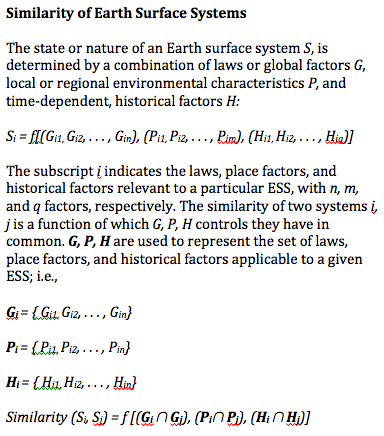PLACE SIMILARITY
I've thought, written, and talked a lot about the need to incorporate geographical and historical contingency--that is, idiosyncratic characteristics of place and history--in geosciences, in addition to (not instead of!) general or universal laws. I've also emphasized the fact that places and environmental systems have elements of uniqueness. This leads to the issue of how to measure or assess place similarity (or the similarity of different, e.g., landscapes, ecosystems, plant communities, soils, etc.). This is a way of thinking about this problem, dressed up with some formal mathematical symbolism. Though I'm personally pretty informal, I'm a big believer in formal statements in science, as it makes arguments at least partly independent of linguistic skills (or lack thereof).

